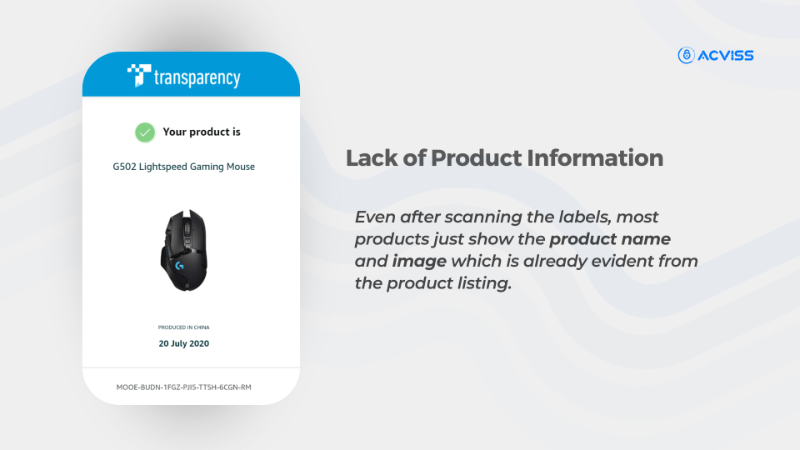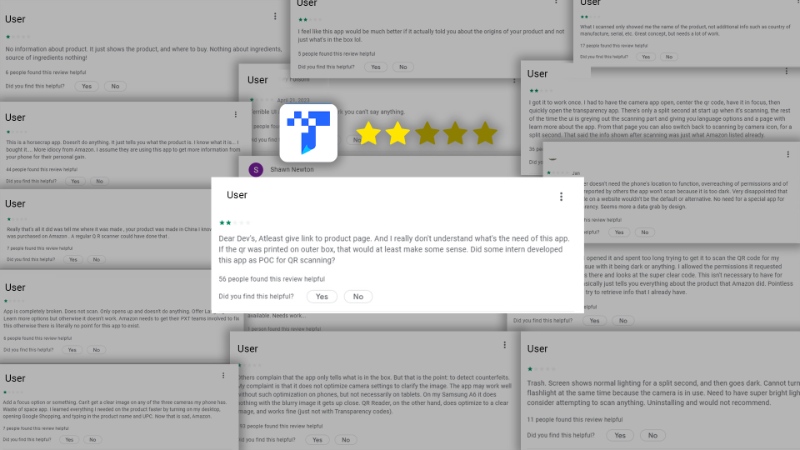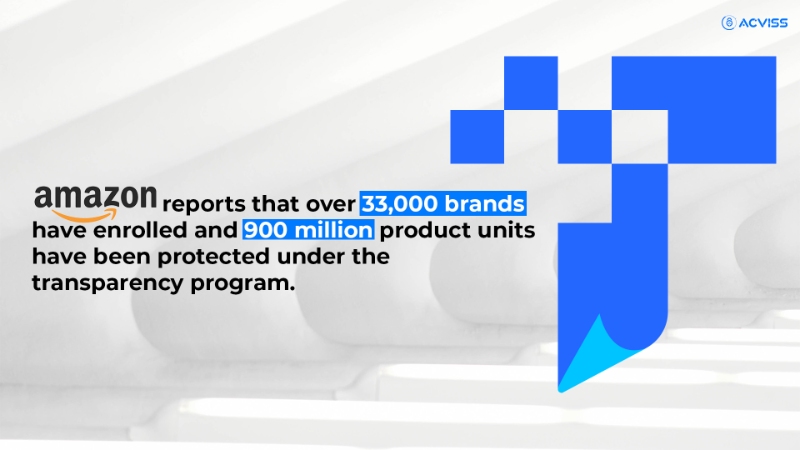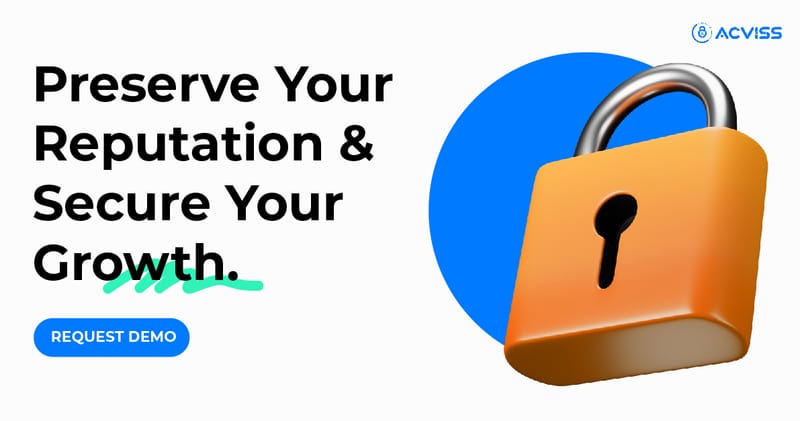Is Amazon's Transparency App Truly Transparent? We Think Otherwise

Amazon's Transparency is designed to provide brands and customers with a tool for verifying the authenticity of products sold on Amazon's platform. At its core, the program revolves around a unique serialised code system that offers several key functionalities.
Amazon reports that over 33,000 brands have enrolled and 900 million product units have been protected under the transparency program.
This allows brands to track their product effectively, understand the weak links of the supply chain management, fight counterfeits or any other tampering in between and build a healthy relationship with the customers.
Contents
- The Transparency Program by Amazon
- Why We Need Supply Chain Transparency.
- How Does the Transparency Program Work?
- How Expensive is the Process?
- Present Situation of the Program
- The Pros of Amazon’s Transparency Program
- The Cons of Transparency Program.
- 1. Inconsistent Technical Support
- 2. Lack of Product Information
- 3. Prone to Duplication
- 4. Intrusion into customer information
- 5. Retail Expansion Hurdles
- 6. Lack of Customer Awareness
- How should an Ideal product authentication app work?
- 1. Educational Efforts
- 2. Prioritise Feedback
- 3. Customization
- 4. User Privacy.
- 5. Accessible
- 6. Integration with Other Marketplaces
- 7. Analytics Dashboard
- The Opportunities Amazon’s Transparency Program Opened
Why Do We Need Supply Chain Transparency?
Ever since the advent of e-commerce platforms, global supply chain management has seen a drastic change.
The global e-commerce logistics market was worth 493.52 billion euros in 2022, which is expected to reach 770.8 billion euros by 2026.
The reason?
Customers can now buy products in the comfort of their homes and get them on the same day or the next. But this convenience came with a price. The e-commerce platform distribution channels have put a heavy toll on the global supply chain, creating opportunities and new challenges.
However, apart from all the opportunities, the greater challenge that came up during the period was maintaining the supply chain integrity.
Counterfeits, low-quality supplements and grey market products with no safety standards started to enter the supply chain due to the lower regulations held by the platforms added with the anonymity of the internet marketplace and no means for product authentication.
Amazon, one of the e-commerce giants came up with stringent policies towards restricting unauthorised sellers and products on the platform. Part of this gave birth to the idea of the Amazon Transparency Program which was introduced in 2017.
How Does the Transparency Program Work?
Any brand can sign up for the transparency program via Amazon. There are a few criteria that must be met to join the program.
The legitimate owner of the brand must be the one signing up for the program along with proof of the same.
The brand should have a Global Trade Item Number (GTIN), such as a UPC or EAN barcode, applied to the items.
The brand must be capable of applying unique Transparency codes on every item produced.
1. QR label authentication
When brands enrol in the Transparency program, they receive a set of unique Transparency codes, which are applied as scannable QR codes on their products. This acts as a digital fingerprint for the product.
The important part is that no seller is permitted to list or sell these branded products on Amazon without a valid transparency code, making it considerably more challenging for counterfeit products to gain a foothold on the platform. Customers upon receiving the product scans the label using the dedicated Transparency app and ensure the authenticity.
2. Engaging Customers.
Beyond counterfeit prevention, the Transparency program offers an additional dimension of interaction between brands and customers. By scanning the QR code with Amazon’s Transparency app, customers can access information about the product and brand, including product data, images, videos, promotions and more. This enhances the customer's shopping experience and builds trust in the brand.
3. Batch Insights
The Transparency program provides brands with the ability to track products by batch or lot code. This feature allows brands to monitor and address issues within their supply chain quickly. This heightened transparency can aid in quality control and supply chain optimization.
How Expensive is the Process?
The labels provided by Amazon are charged at a nominal rate between $0.01 to $0.05 per barcode. To onboard more and more brands to the program, they even gave away 20,000 QR codes for free in August 2023. This enabled a lot of brands to test out the effectiveness of the program and take a giant step into the brand protection world.
However, the brands in the US are mandated to use the QR code with the Amazon logo on it to ensure double-fold security. This has adversely affected many businesses as the rate skyrockets for such a process, which may be a bit costly for small businesses in the long run.
The pricing may increase as the process of printing and integrating the labels onto the product is charged differently. This can be undertaken by the brand or the manufacturer alone as they can be flexible in finding a solution that meets their budget requirements.
Amazon Brand Registry or Transparency Program, which one should you choose
Present Situation of the Program
The initial promising start has taken a hard hit in converting into a long-term success. Even though they can take advantage of their vast supply chain and onboard sellers and brands to join the transparency program the end result seems to be still underwhelming.
Let’s take a look at what worked for them and what did not!
The Pros of Amazon’s Transparency Program
1. Counterfeit Prevention: Requiring a unique Transparency code for each branded product has enabled Amazon to take significant steps towards preventing counterfeit products from being sold on its platform. This is a crucial benefit for both brands and customers.
2. Interaction with the users: The scannable QR codes allow brands to connect with customers deeper by providing additional product information and promotional content. This can lead to increased customer trust and loyalty.
3. Traceability: The ability to track products by batch or lot code can be invaluable for brands looking to maintain product quality and streamline their supply chain operations.
The Cons of Transparency Program.
While the Transparency program offered several benefits, the Transparency app on Google Play Store tells a different story.
The Transparency App on the Google Play store has a rating of 1.9 stars with over 1,097 reviews. Out of which only 82 reviews have given the app 4 stars or above. The rest of the over 1000 reviews are below 3 stars, which is an indication that the e-commerce giant should immediately look into the functioning of the program.
Here are the problems pointed out by the customers left in their reviews.
1. Inconsistent Technical Support
A large number of complaints raised regarding the program was the irregularity in the performance of the Transparency app. A majority of the customers are unable to scan the code present in the product due to the technical error of the application. Customers are questioning the program's practicality if they cannot scan and authenticate the anti-counterfeit labels.
2. Lack of Product Information
Even after scanning the labels, most products just show the product name and image which is already evident from the product listing. This, however, is highly manipulatable considering the lack of detailed information regarding the product. An anti-counterfeit solution system needs to provide the necessary information about the product such as
Manufacturer's name.
Brand name.
Location of the manufacturer and brand.
Serial number or other identification codes.
Contact information.
Product ingredients or raw materials included.
Price and custom messages from brands to the user.

This not only guarantees the customer with necessary information but also acts as a digital certification that can help in building greater trust in customers.
3. Prone to Duplication
Amazon claims the program to be an anti-counterfeiting solution initiative, but the labels integrated into the product are not completely foolproof. It is simple to duplicate the labels and scam customers. Counterfeiters can copy a label and put it in a fake product or package and pass it off as an original product fairly easily.
4. Intrusion into customer information
Most of the reviews point out that the app asks permission for the customer's location while scanning the code. This has raised a lot of eyebrows on why the scanner needs location data. Some customers have even cited this as an invasion of privacy and unethical practice from the e-commerce giant.
5. Retail Expansion Hurdles
The Transparency stickers, while designed to be universal, could potentially be seen as an advertisement for Amazon, creating hurdles for retail expansion beyond the Amazon platform. Retail buyers for other companies might perceive these stickers as unfavourable.
6. Lack of Customer Awareness
Many customers are still not familiar with QR codes as markers of authenticity and Amazon has not invested significantly in educating customers about how to use Transparency codes to verify authenticity.
Customers upon arrival of the product are unaware of the presence of the label. This lack of customer knowledge has led to counterfeit stickers posing a threat. It is fairly simple in this age to duplicate a label to be passed off as an original and is even easier to trick an unsuspecting customer into believing it is real.
Learn more about the alternatives for the Amazon Transparency program
How should an Ideal product authentication app work?
Bringing visibility into the supply chain is not a small feat. It requires a strong conviction towards what you want to achieve. If your brand is planning to achieve a non-reliant product authentication solution then make sure you ensure these factors are done right:
1. Educational Efforts
Invest in educating customers about the authentication program and how to use the authenticate genuine products effectively. This can enhance customer awareness and trust in the program. The initiative will be futile if the customers have no idea how to use the technology and why it's important.
Use social media marketing campaigns to encourage customers to follow the instructions and ask the delivery or retail partners to guide the customers to use the app or solution you provide. These small steps can lead to a dramatic change in the long run.
2. Prioritise Feedback

The archnemesis of a brand is its inability to follow customer feedback. The reason why the Transparency program declined in the first place is that despite the recurring customer grievances, Amazon failed to make improvements to the application.
So be prepared to receive customer complaints and make readily changes to smoothen the user experience. Customer support is vital for steady growth and maintaining a healthy relationship is the key ingredient.
3. Customization
Offering more customization options for brands to tailor the information provided through the QR code could enhance customer engagement. Brands should have the ability to share unique content that aligns with their branding and marketing strategies.
4. User Privacy
It is vital to safeguard the customer's interest. Privacy is an important right in the digital age and make sure to uphold it. Customer data that are collected should be secured to provide a tailor-made experience for them.
5. Accessible
The program should be easily accessible to both brands and customers. Having a complex set of criteria and enrollment structure can demotivate a lot of sellers, especially smaller businesses. Similarly, the end consumer should be able to understand the program simply. Education and awareness should be in focus of teaching the program as straightforward as it can be. It is also essential to create the application or software with priority to enhance user experience, one factor that adversely affected the Transparency program. User-friendliness is the key aspect you should follow while devising the whole program before implementing it.
6. Integration with Other Marketplaces
Expanding the use of labels or codes to other e-commerce platforms could provide an even more robust solution for combating counterfeit products and protecting brand integrity across the online retail landscape.
7. Analytics Dashboard
It is important to have a proper system to track and trace the operation, which invites the need for a well-structured dashboard system. This allows brands to understand the movement of the product or packaging, understand buyer behaviour and get insights into what the customer requires, their feedback and improve on the shortcomings.

Opportunities Amazon’s Transparency Program Opened
Although a cold impact on the users, the Transparency program has opened several avenues for others to explore supply chain management.
1. Access to Authentic Products Online
The primary purpose of Transparency was to protect brands and customers from counterfeit products. This is especially important for brands facing strong competition from counterfeit items. The transparency program has helped brands realise the importance of authentication and paved the way for others to take part.
2. Build Customer Trust:
For customers, the program instils confidence in the authenticity of the products they purchase on the platform. This trust can lead to repeat business and brand loyalty, a strong foundation for market success.
3. Supply Chain Improvement
The tracking capabilities of the program can help brands improve their supply chain operations, which is vital for maintaining product quality and ensuring efficient operations.
4. Improve customer relations.
Brands can use the solution to provide customers with additional information and promotional content, enhancing the customer experience and strengthening brand-customer relationships.
It is essential to understand the current situation and how other marketplaces are adopting solutions to secure their platform and customers. The popular e-commerce website, Wish was able to 98% of IP violations reported in the last 6 months, leveraging AI tools and strict regulatory actions.
The e-commerce landscape is constantly evolving and ensuring the authenticity of products is a pressing concern, programs like Amazon’s Transparency have the potential to play a significant role in addressing this issue and it is time brands embraced the changes and built strategies to safeguard their supply chain.
If you desire to be a brand well protected from counterfeiting bad actors, remember to get in touch with us. We at Acviss are here to create a world that is safe for brands to grow and build trust for their consumers.


